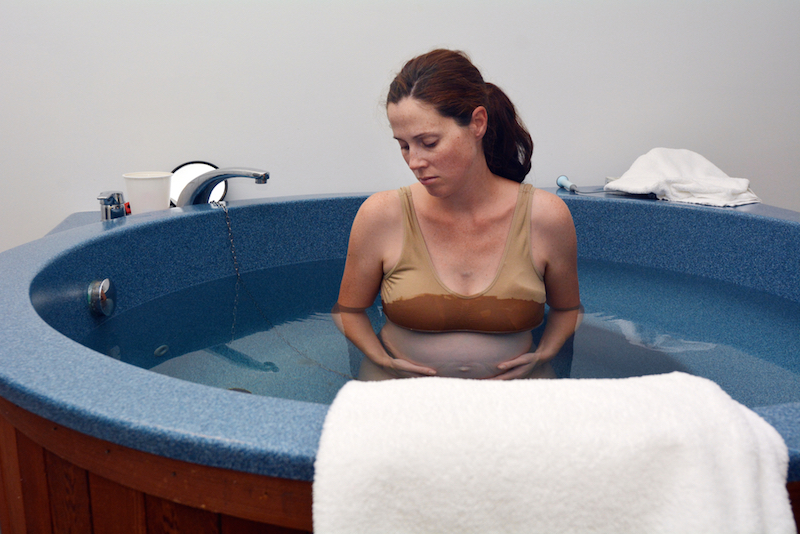2 Cases of Legionnaires' Disease in Newborns Linked to Water Births

Two babies in Arizona who were delivered via "water birth" recently developed Legionnaires' disease, a type of bacterial lung infection, just days after they were born, according to a new report.
Both infants recovered after being hospitalized, and the cases were unrelated, the report said. But the health experts who investigated the cases "identified numerous gaps in infection prevention for water births" that may have contributed to the babies' exposure to the Legionella bacteria that made them sick, they wrote in their report.
In the first case, which occurred in January 2016, the baby was delivered by a midwife into a tub filled with tap water. The tub was cleaned and filled right before the delivery, and the baby did not appear to inhale any of the water during birth, the report said. [9 Uncommon Conditions That Pregnancy May Bring]
But a day later, the baby started to have trouble breathing and was taken to the hospital. The baby was found to have both Legionnaires' disease and a congenital heart condition that was not related to the infection. Legionella bacteria can grow in water systems, including hot tubs, air conditioners and plumbing systems, according to the report, from researchers at the Centers for Disease Control and Prevention and the Maricopa County (Arizona) Department of Public Health.
In the second case, which occurred in April 2016, the baby was born at home in a rented Jacuzzi hot tub with spa jets, the report said. The tub was placed in the mother's bedroom and was filled with tap water that was heated to 98.0 degrees Fahrenheit (36.7 degrees Celsius). The filled, heated tub sat in the bedroom for about a week before the baby's delivery. During the birth, the mother first labored outside the tub, and then entered the tub only for the delivery, the report said. The baby did not appear to have inhaled any water during birth, the doctors wrote in the report.
But three days after birth, the baby developed a high fever and was taken to the hospital, where the infant tested positive for Legionella bacteria.
In both of these cases, the babies were treated with the antibiotic azithromycin for 10 days. The infant in the first case remained hospitalized for two months, mainly because of the newborn's heart condition, and the baby in the second case was released from the hospital after about a week, the report said.
Sign up for the Live Science daily newsletter now
Get the world’s most fascinating discoveries delivered straight to your inbox.
The researchers noted that tap water is not sterile, and that Legionella bacteria can grow and spread in plumbing systems. In addition, the high temperature of the water used in the Jacuzzi was within the optimum range for Legionella growth, they said.
Cases of Legionnaires' disease in newborn infants are rare. In Arizona, there was just one case of the disease in a newborn between 2011 and 2015, according to the report. [7 Baby Myths Debunked]
There was also a case of an infant in Texas who died of Legionnaires' disease after a water birth in 2014. Helped in part by guidelines developed in Texas after that case, the researchers who wrote the new report put together their own educational resources and guidelines for midwives in Arizona. For example, one of the new recommendations is to let hot water run for 3 minutes before filling the birthing tub, which can help reduce the risk of Legionella infection, the researchers said.
The American College of Obstetricians and Gynecologists (ACOG) says that undergoing the early stages of labor in water may offer some benefits, such as shorter labor, and so laboring in water is an option that may be offered to healthy women who are at least 37 weeks pregnant.
However, there isn't enough data on the risks and benefits of actually delivering the baby in water for the ACOG to recommend this method. Therefore, the ACOG recommends that births not take place in water. If a woman requests to give birth in water, she should be informed that the risks of this practice haven't been studied sufficiently, the ACOG says.
In addition, facilities that offer water birth should establish rigorous protocols for the maintenance and cleaning of tubs and pools, and should have plans for how to move women from the tub if complications were to develop, the ACOG says.
The report is published today (June 8) in the CDC's journal Morbidity and Mortality Weekly Report.
Original article on Live Science.

Rachael is a Live Science contributor, and was a former channel editor and senior writer for Live Science between 2010 and 2022. She has a master's degree in journalism from New York University's Science, Health and Environmental Reporting Program. She also holds a B.S. in molecular biology and an M.S. in biology from the University of California, San Diego. Her work has appeared in Scienceline, The Washington Post and Scientific American.
Flu: Facts about seasonal influenza and bird flu
What is hantavirus? The rare but deadly respiratory illness spread by rodents











